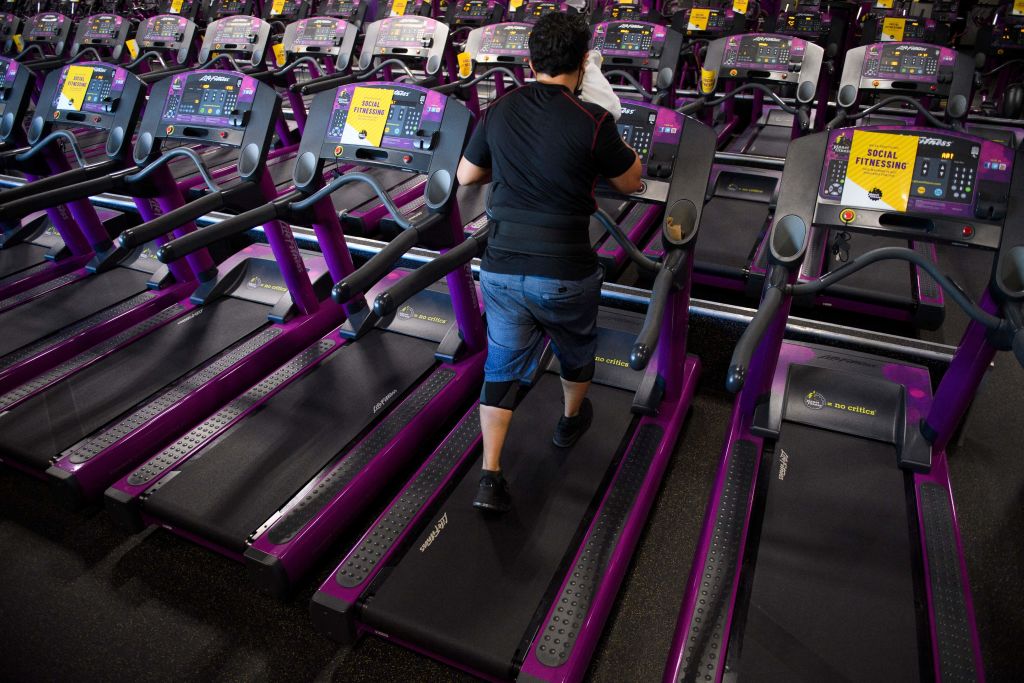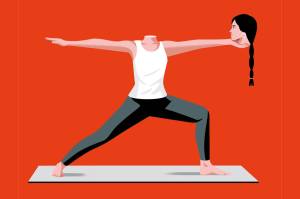One of the things I did during my nine-month hiatus from Prufrock, the email newsletter I send three times a week (if you aren’t a subscriber, why not give it a try?) was to cycle the Blue Ridge Parkway twice. I started in Cherokee, North Carolina, rode to the start of Skyline Drive, Virginia, and back. It took two weeks — one at the beginning of the summer and one at the end — and I clocked over 900 miles and 100,000 feet of climbing. It was something I had wanted to do for a long time. I loved it and will never do it again.
Cycling is an ideal way to experience a landscape. You feel the ups and the downs. Walking has a pleasure of its own, but with cycling you can experience an entire region — in all its subtle variety — in a single day. A bike is a machine that magnifies nature. A car negates it.
To prepare for the Parkway, I did a very modern thing: I spent hours in a dark basement sweating on a trainer. I say modern because of the technology, but our obsession with working out seems very modern, too. It is an odd thing to spend hours exercising — screen illumined, earphones in — to get better at exercising.
But Bill Hayes argues in his entertaining new book, Sweat: A History of Exercise, that working out is not so new after all. It’s ancient. The early Greeks wrestled, boxed, swam and ran. The Olympic Games, first held in 776 BC, eventually included running, the discus, the javelin, the long jump, wrestling and other sports. You may recall that Odysseus competed reluctantly but successfully against the young men of Phaeacia. Plato, Hayes reminds us, was an accomplished wrestler and advocate of regular physical training.
The purpose of exercise in the ancient world was to prepare men for combat. Games were part of that preparation. When Plato recommends regular physical training, it is so that the men of a city would be prepared “on the day of the real fight.”
With the rise of Christianity, gladiatorial contests and games were eventually banned, and the cult of exercise associated with these events died out. “This wasn’t simply because exercise and athletics were antithetical to the tenets of Christianity,” Hayes writes, “but instead because athletic competition was linked to pagan rituals…and dedicated to the pantheon of Greek and Roman gods.”
(In one of many interesting asides, Hayes notes how the sweat of athletes was “considered a prize commodity”: “After competing or simply exercising, athletes would scrape the accumulated sweat and oil from their bodies and funnel it into small pots…It was used for medicinal purposes, the belief being that the gloios must contain the essence of arête—the striving for excellence that defined a great athlete.”)
Of course, exercise wasn’t — and isn’t — “antithetical to the tenets of Christianity.” In 325, the Council of Nicaea clearly ruled against the belief that the body was inherently evil, but Christianity did place a particular importance on the soul. “During the Middle Ages,” Hayes writes, “the emphasis was on the soul, one’s spiritual life. The body—which had been idealized, fetishized, by the Greeks—was now seen more as a vessel for sin.” No doubt this attitude was widespread, but other factors that contributed to the decline of exercise — such as the shift in how wars were fought — are oddly ignored.
Enter Girolamo Mercuriale, a medical doctor who in 1573 published a treatise on the benefits of exercise called De Arte Gymnastica. Hayes sees Mercuriale as a man both ahead of his time and indebted to the renewed interest in ancient manuscripts (which monks had carefully preserved) at the end of the Italian Renaissance.
In the service of one Cardinal Farnese in Rome, Mercuriale was granted access to both Cardinal Farnese’s extensive private library and the Vatican’s. Borrowing heavily from ancient thinkers like Galen, Mercuriale made a radical case for exercise in Gymnastica. Whereas Galen had defined exercise as any “vigorous movement” that caused breathing to increase, Mercuriale added that the purpose of exercise was not training for war but health. Exercise “is undertaken,” Mercuriale writes, “with the aim of keeping healthy or building up a sound constitution.”
Thus, modern exercise is born — or almost. For, as Hayes notes, Mercuriale would have been firmly against the idea that one should exercise to increase or maintain beauty. This is what makes the modern emphasis on looking fit significantly different from earlier approaches to exercise. Hayes mentions Mark Greif’s sardonic 2004 essay “Against Exercise,” which likens the modern gym to a “well-ordered masturbatorium,” but dismisses it as “trying too hard in coming out against exercise.”
But Greif has a case. “The thinness we strive for becomes spiritual,” he writes, and there is a sense in which the ancient association of exercise and worship is back. The only difference is: we are the gods we worship.


















